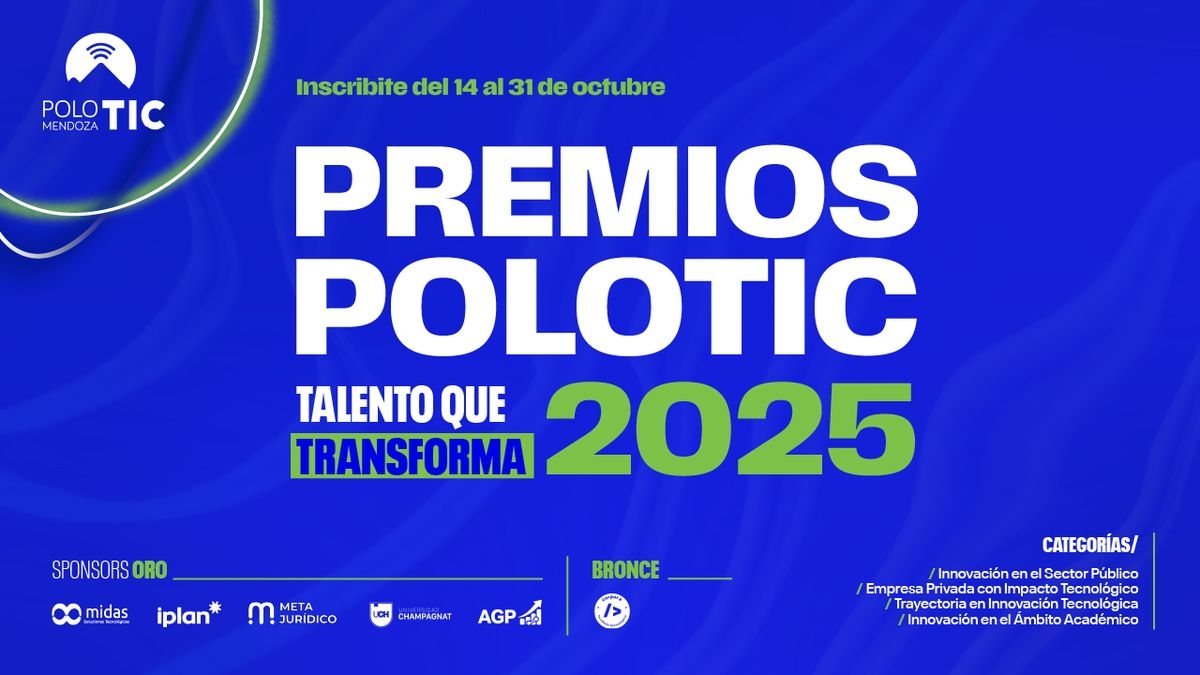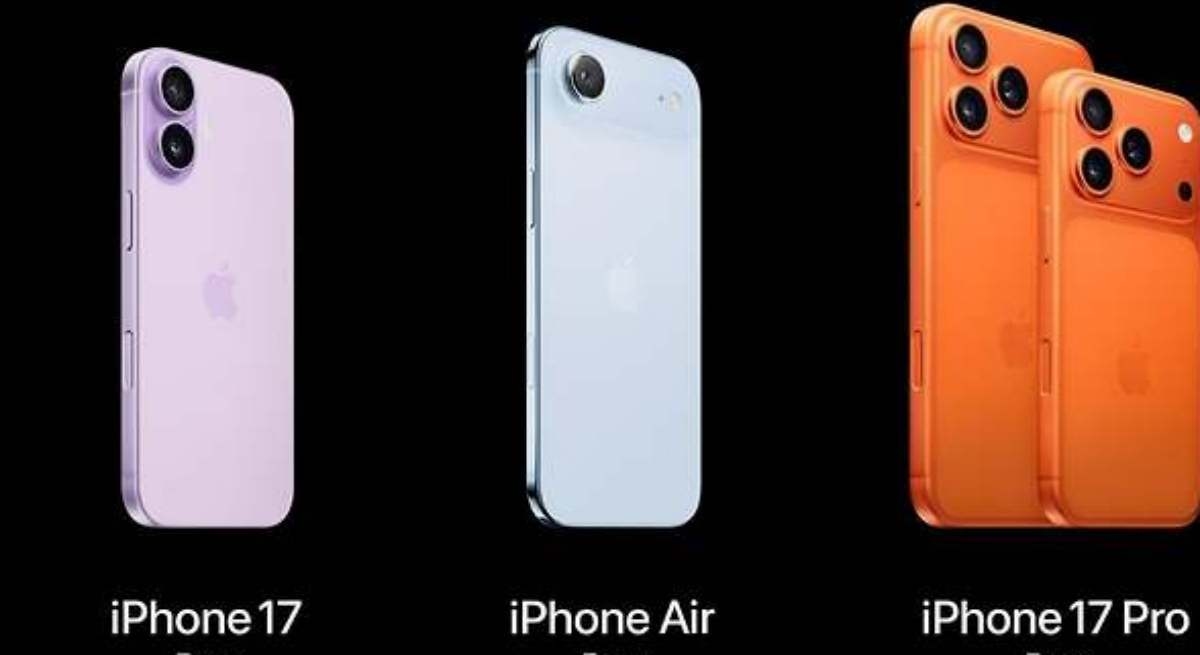The Kenyan slum that turns waste into works of art: “There is talent here worth recognizing”

In the ochre sea of corrugated iron roofs that blankets Kibera , one of Africa's largest informal settlements, located seven kilometers southwest of Nairobi, Kenya, stands a striking building: the only one painted white and with two stories. Its facade reads HOF Gallery . It is the heart of the Kibera Art District (KAD), a project that seeks to transform one of the continent's most stigmatized neighborhoods through art and creativity.
From one of the building's windows, visual artist Santana Sino , a member of the project's management team, observes the comings and goings of visitors. “Those who arrive often have preconceived notions about what they'll find in an informal settlement. At KAD, we want to change that perception and show that there's also worthwhile talent here,” he explains. His work, along with that of dozens of young artists, has transformed the neighborhood's streets into an open-air museum, where spaces for art education and the production and exhibition of works are multiplying, both for emerging artists and for the community at large.
Around it, the metallic clang of hammers and the vibrant colors of murals momentarily mask the density of the surroundings. According to official 2019 figures, nearly 200,000 people live in the Kibera slum —though other sources put the figure as high as 700,000. From the air, the neighborhood resembles an endless sea of metal roofs, but as you walk its streets, the landscape transforms: fruit and vegetable stalls, kitenge fabric shops, sewing workshops, and small businesses enliven the neighborhood's character. Among them, the KAD stands out as a vibrant hub of color and opportunity.
The idea arose about 15 years ago when local activist Patrick Othieno and American entrepreneur Jamey Ponte, who had lived intermittently in Kibera for over a decade, asked themselves: “How can we create a platform that unites the community and artists, attracts diverse audiences, and fosters an exchange of experiences and learning?” explains Othieno. The answer was the creation of KAD, a project that, since its inauguration in late 2023, has sought to integrate art and culture into the life of the neighborhood.
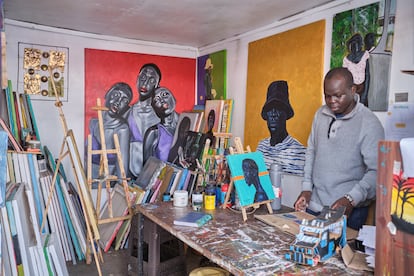
The smell of chapati (a type of bread) and ginger tea fills the morning air in the streets of KAD. Squatting, Saviour Juma lights a can of Monster. And the smoke rises from the ground to his face. “I started working with recycled materials in 2013. I needed colors for my works, but I couldn’t afford to buy acrylics, so what I had available were the cans,” says this 22-year-old from the Art Sun Valley space, a center created in 2020 that now gives emerging artists the opportunity to be part of the KAD circuit.
I started working with recycled materials in 2013. I needed colors for my artwork, but I couldn't afford to buy acrylics, so what I had available were cans.
Savior Juma, Kibera artist
“What I’m trying to do is make people aware that a can can also be used for artistic purposes,” Juma explains. His works depict what he sees in his daily life, from the skyscrapers of Nairobi and the bodaboda (motorcycle) drivers in his neighborhood, to anonymous and famous people… All made from sheets of metal obtained from recycled cans.
In addition to its creative value, the project has an economic impact. “Having a space like this puts us on the radar of buyers who visit KAD, most of whom are tourists. That helps us grow,” says Juma, who pays 4,000 Kenyan shillings a month (26 euros) to rent the space and keeps the profit from sales.
Transforming the future of the 'slum'According to recent data from the Kenya Institute for Public Policy Research and Analysis (KIPPRA), it is estimated that of Nairobi's nearly six million inhabitants, approximately 60% live in the city's roughly 200 informal settlements. Although primary education has been free in Kenya since 2002, children living in informal settlements like Kibera face numerous barriers to accessing and remaining in school due to difficult socioeconomic conditions and a lack of adequate infrastructure.
That's one of the reasons that led Bernard Maingi to take the reins of Art Haus, a project whose objective is to educate young people in the neighborhood who otherwise wouldn't have the opportunity to access arts education. “I'm a self-taught artist and I never had anyone to guide me on this path. Although the community never made it easy for me, I understood that I had to give something back, and that was the reason I did it: so that no other child would go through the same thing,” Maingi explains from the space, a small house decorated with the works of the students themselves.
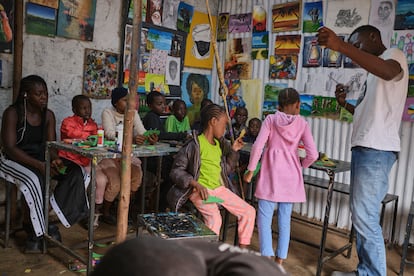
Today a new group of students begins: “I have to do something entertaining to capture their attention and get them involved,” explains Nard, as he is known in Kibera. Art Haus currently has 36 students, and as the new ones arrive, they cut out cardboard, color, and fix their gaze on the teacher, who entertains them with activities and games: “One of the greatest benefits of this space is that it keeps young people occupied, so they don't fall into drug use or crime. In this way, we offer a safe space while educating them,” he says.
However, the ultimate goal of Art Haus, as with every KAD space, is to economically empower the community: “For them to have a purpose and for their hobby to become a career for the future, to create works that have a place in today's market… That's our goal,” he explains. In a place where the unemployment rate is 50% and most residents earn around 200 Kenyan shillings (1.33 euros) a day, such an initiative stands out as an alternative to institutional neglect.
Animal bones for artistic purposesIn a dark, damp room, Victor Nicholas reaches into a sack full of animal bones. He pulls one out, examines it, touches it: “This one,” he decides. Then he sits down at a machine, grips the bone with both hands, and begins to shape it. Welcome to Victorious Craft, a place where death is given new life.
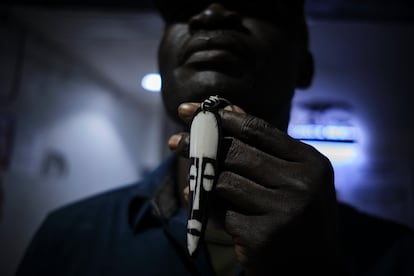
“We started this project to clean up the neighborhood of trash, and we soon realized we could transform the way we used animal bones that were previously thrown away,” Nicholas explains from his workshop. So, the 16 members of this collective got to work crafting jewelry from recycled materials. The machines, connected by hand to a water pump, rotate discs that shape the materials, ultimately transforming them into necklaces, rings, can openers, or any other piece that can be sold to visitors of the KAD (Kennel Art Museum).
Only 33% of the resources are collected in Kibera, leaving approximately 2,690 tons of waste uncollected each day.
According to the NGO Etco-Kenya, only 33% of waste is collected in Kibera , leaving approximately 2,690 tons of waste uncollected every day. The growing demand for their products has led Victorious Craft to broaden its supplier base, and now local slaughterhouses supply the project with cow, goat, sheep, and camel bones. The artists' finished products are displayed in a showcase so that visitors to the KAD (Kenya Art and Design) can take their time deciding what to buy. "We sell and continue to train young people to take over," they explain.
From the HOF Gallery , Santana Sino observes how KAD pulsates with a life of its own. He works diligently to manage visits and artist residencies, as well as to expand the reach of the work of the young painters, shoemakers, artisans, and glassmakers who make up this unique universe. “Many young artists from Kibera had never seen a gallery or even considered exhibiting their work. Bringing art to the neighborhood gives them the opportunity to learn, grow, and showcase their talent,” explains Santana. He adds, “Through KAD, art ceases to be something distant and elitist: it becomes a tool to empower, teach, and transform the lives of those who experience it every day.”
EL PAÍS



%2520Is%252075%2525%2520Off%2520at%2520The%2520Home%2520Depot.png&w=3840&q=100)
